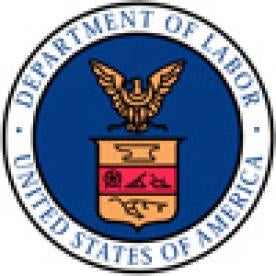The Labor Department’s Wage & Hour Division (“WHD”) released final regulations implementing mandatory paid sick leave for employees working on federal service, construction, and concessions contracts. The Labor Department incorporated some changes to the proposed regulations, which we previewed earlier this year, but the final rule still imposes significant obligations on federal contractors and subcontractors.
The costs are likely to come both from the paid sick leave itself (a maximum of seven days per year) and from the layers of complexity on top of contractors’ existing compliance obligations with respect to these types of contracts. The regulations overlap with WHD’s responsibility for oversight of the Service Contract Labor Standards (commonly known as the Service Contract Act, or “SCA”), which is already a complicated compliance undertaking for employers. In this post, we summarize the highlights of the final regulations and flag issues for contractors to consider before the regulations take effect in January 2017.
Part I: Some Improvements to the Proposed Regulations
A few features of the final regulations will ease some of the transition costs. First, WHD removed a proposal to require successor contractors to reinstate unused leave:
“After careful consideration of these comments, the Department is promulgating the Final Rule without requiring that successor contractors reinstate paid sick leave to employees who worked on the predecessor contract.”
Second, the final rule explicitly states that the regulations do not include contracts that fall outside the scope of the SCA. When WHD published the proposed regulations, it requested comments on whether to extend coverage to certain service contracts that are excluded from SCA coverage. These contracts include those involving services performed “exclusively by bona fide executive, professional, or administrative employees,” often known as “white collar” employees. In the final regulations, WHD agreed that the contracting community’s familiarity with the SCA, its implementing regulations, and the related Minimum Wage Executive Order counseled in favor of consistency with those rules, and declined to extend the coverage requirements for paid sick leave.
Part II: Potentially Helpful Options
In several contexts, the regulations use a “trade-off” mechanism whereby contractors can avoid some compliance burdens in exchange for maximizing the amounts of paid sick leave they offer covered workers. A trade-off applies, for instance, with respect to white collar employees for whom contractors have no current obligation to track hours. Under the final rule, “the contractor may, as to that [white collar] employee, calculate paid sick leave accrual by tracking the employee’s actual hours worked or by using the assumption that the employee works 40 hours on or in connection with a covered contract in each workweek.” In effect, contractors may either track hours of exempt employees as they do for non-exempt employees, or they may avoid the tracking burden by assuming the exempt employee is working a full-time schedule of 40 hours per week and giving exempt employees the full amount of paid sick leave on that basis.
Trade-offs also apply to the contractor’s choice for tracking the amount of paid sick leave employees earn. The regulations specify an accrual rate of one hour of paid sick leave for each 30 hours worked on or in connection with a covered contract. Instead of awarding paid sick leave on this accrual basis, however, contractors may elect to front-load the full amount of paid sick leave (i.e., 56 hours) at the beginning of each year. Doing so, however, changes the rules with respect to the total amount of paid sick leave an employee may have available for use at a given time. Contractors that award paid sick leave using the accrual method may cap the amount of paid sick leave available for use at 56 hours. Contractors that use the front-loading method may not do so. In exchange for the convenience of front-loading, contractors must allow employees to accumulate a larger pool of available hours.
Part III: Compliance Obligations (the Bad News)
Even with the convenience of the trade-off mechanisms, however, contractors will have new recordkeeping obligations. Contractors must update their recordkeeping systems to track (among other items) paid sick leave balances, employees’ requests, and documentation of “certifications,” which employers may require if an employee will use three or more consecutive full workdays of paid sick leave. Contractors must also provide written notices of paid sick leave balances at the end of each pay period or each month, whichever interval is more frequent.
Other challenges remain. Contractors have the option of keeping existing paid sick leave benefits, but they must ensure that the benefits are at least as generous as those required by the regulations, and they must comply with the regulations’ provisions on allowable use and recordkeeping. Calculating the carryover of paid sick leave from year to year is also a complex process, even with the frontloading option. Contractors have exposure to risk through the rule’s sanctions regime for noncompliance, which states that “miscalculating” an employee’s leave balance can constitute prohibited interference with the employee’s right to paid sick leave. Contractors should take advantage of the short window before implementation begins to analyze the costs and benefits of each option, and to determine which method makes the most sense for their business.
The regulations also present challenges for contractors that include paid sick leave as part of a fringe benefit package for SCA employees. The final rule reiterates the principle that paid sick leave benefits cannot be used to meet SCA fringe benefit obligations. The SCA prohibits contractors from claiming credit for benefits that are required by law, as these paid sick leave hours are. As a result, contractors that currently offer similar benefits must back them out of their SCA fringe benefit calculations. Recognizing the complexity of that process, and the fact that the new benefits have substantial value, WHD published a series of FAQs in which it announced the intention to publish new health and welfare benefit rates for SCA contractors who receive paid sick leave under this new rule. That rate is expected to be lower than the current rate, but it has not yet been published. It is not clear how extensive these rate changes will be, and they may not change enough to offset the new costs associated with the final regulations.
In sum, the final regulations present additional burdens for employers that require close attention in the near term. Thoughtful analysis now can help contractors organize efforts to minimize the cost of compliance and reduce the risk of potentially painful sanctions for noncompliance.







 />i
/>i
